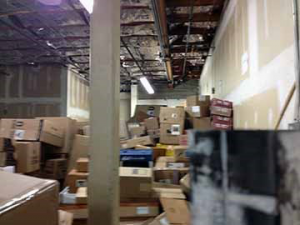Signs That Your Hardware Is About To Break
When it comes to door hardware, there are a few steps you can take to extend its life. We get it. That stuff is expensive and you want it to last. There’s a reason almost all hardware comes with a warranty. However, accidents do happen and while they may not be able to be avoided completely, you can often spot signs of hardware that’s about to break. If you catch it in time, you may save yourself some money and a headache.
Grinding
If you’re hearing a scraping sound whenever your door opens or closes, something isn’t right. A properly working door will operate smoothly, with little to no sound or friction. That friction could be caused by a number of things ranging from debris to misalignment to simply just having some worn out parts. The point is if you’re hearing some sort of grinding, it’s a sign of bad things to come. If you have it checked out quickly though, it can more than likely be fixed fairly easily.
Key Operating Difficulty
Are your keys getting tougher and tougher to turn? Heads up. That might not just be age or lack of lubrication causing them to move slower. More often than not, difficulty in turning a key is a sure sign of some hardware that’s about to break. Now, I can tell you from experience that a broken key is possibly one of the least fun things ever to deal with. It’s nothing short of a huge hassle. Before that happens, call a locksmith. You’ll be able to replace the broken hardware and save yourself from replacing both the key and the lock.
Loose Screws
Ok, this seems incredibly obvious, but it’s true. If you see any loose screws on your door or locking hardware they aren’t just dangling around for any reason. Sure, some of the time you’re going to be able to tighten them up yourself and solve the issue, but more often than not, one loose screw leads to a much bigger problem. If you notice any loose screws in your hardware, check it out immediately.
Sticking
If any component of the hardware seems “sticky” or is binding up, this is yet another sign something in your door is about to break. Again, the solution might be something as simple as lack of lubrication causing the door to seem “sticky” but think of how much less expensive it is to just add some lubrication as opposed to replacing entire pieces of hardware? If the locking mechanism won’t release, it’s something that could cause a lot trouble down the road. However, it’s one of those things that if you catch early enough it could be a quick and simple fix.
The End Results
While, yes, I’ve focused mainly on the direct savings that result from catching a break before it happens, but there’s actually a lot more to it. A broken storefront door can give off the perception that you don’t take pride in your business, and that itself can result in loss of profits. People don’t want to walk into a business with a door hanging on its hinges or slamming behind them. They aren’t going to expect quality products from a store like that. It’s important to remember that the first thing people see when coming to your facility is your storefront; therefore you want your entry doors looking well taken care of and operating smoothly.
On top of that, catching the problem before it really starts will save you time waiting on parts. Plus, a door that isn’t operational may cause you to close your doors for a certain amount of time which could then result in… what else? Money loss.
At the end of the day, you can ignore the signs all you want but unfortunately, the longer you wait the worse it will get. You’ll end up paying for it in the long run. It’s far less expensive to tighten a few hinge screws than it is to tighten the screws and replace the door hardware that has been damaged due to door alignment issues. Go ahead and pay attention ahead of time to save yourself the headache on top of the loss of money.
Know of any other signs to look for? Leave them in the comments and we can add them to our ever-extending list!
A version of this article originally appeared on LockBytes.


